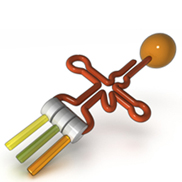what tRNA actually?
Transfer RNA (tRNA) is a small RNA molecule that plays a crucial role in the process of protein synthesis. Protein synthesis is the process by which the information stored in genes is converted into functional proteins that are essential for the proper functioning of all living organisms. tRNA is responsible for bringing the correct amino acids to the ribosome during the process of translation, which is the process by which the information stored in messenger RNA (mRNA) is converted into a functional protein.tRNA is a small molecule, typically around 74 to 95 nucleotides in length, and has a cloverleaf-like shape. The structure of tRNA is composed of three main regions: the anticodon, the acceptor stem, and the T-loop. Each tRNA molecule is specific to a particular amino acid, and the sequence of nucleotides in the tRNA molecule determines which amino acid it will carry.
In addition to its role in protein synthesis, tRNA has been found to have
other important roles in cells. For example, tRNA can act as a scaffold for the formation of ribonucleoprotein complexes, which play important roles in various cellular processes such as gene regulation, stress response, and signal transduction. tRNA has also been found to play a role in the regulation of translation under different cellular conditions, such as stress, nutrient deprivation, and cell growth.
tRNA molecules can also be modified post-transcriptionally by various enzymes, which can affect the stability, translation efficiency, and codon recognition of the tRNA. These modifications can also play important roles in various cellular processes such as stress response, cell growth, and cancer.



0 Comments
Hello there,
Thank you for reaching out to us! We're thrilled to hear from you and would love to send you an awesome reply. Your message is important to us, and we promise to respond as soon as we can.
In the meantime, feel free to explore our website and discover all the exciting things we have to offer. If you have any specific questions or requests, don't hesitate to share them with us – we're here to help!
Once again, thank you for contacting us. We'll be in touch soon with an amazing reply that will surely brighten your day.
Best regards,
[AJAY SHARMA /knowledgesphere.org.in]